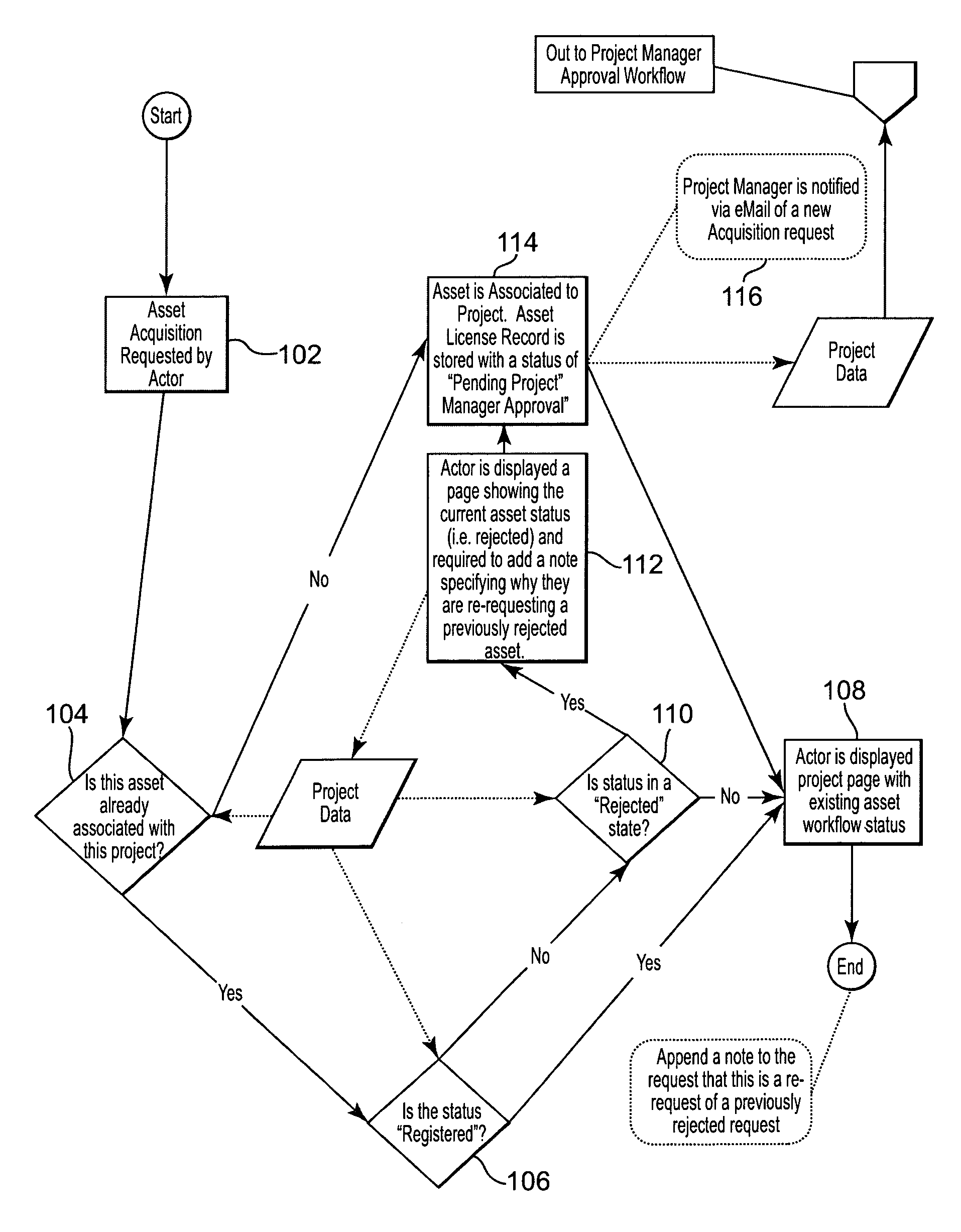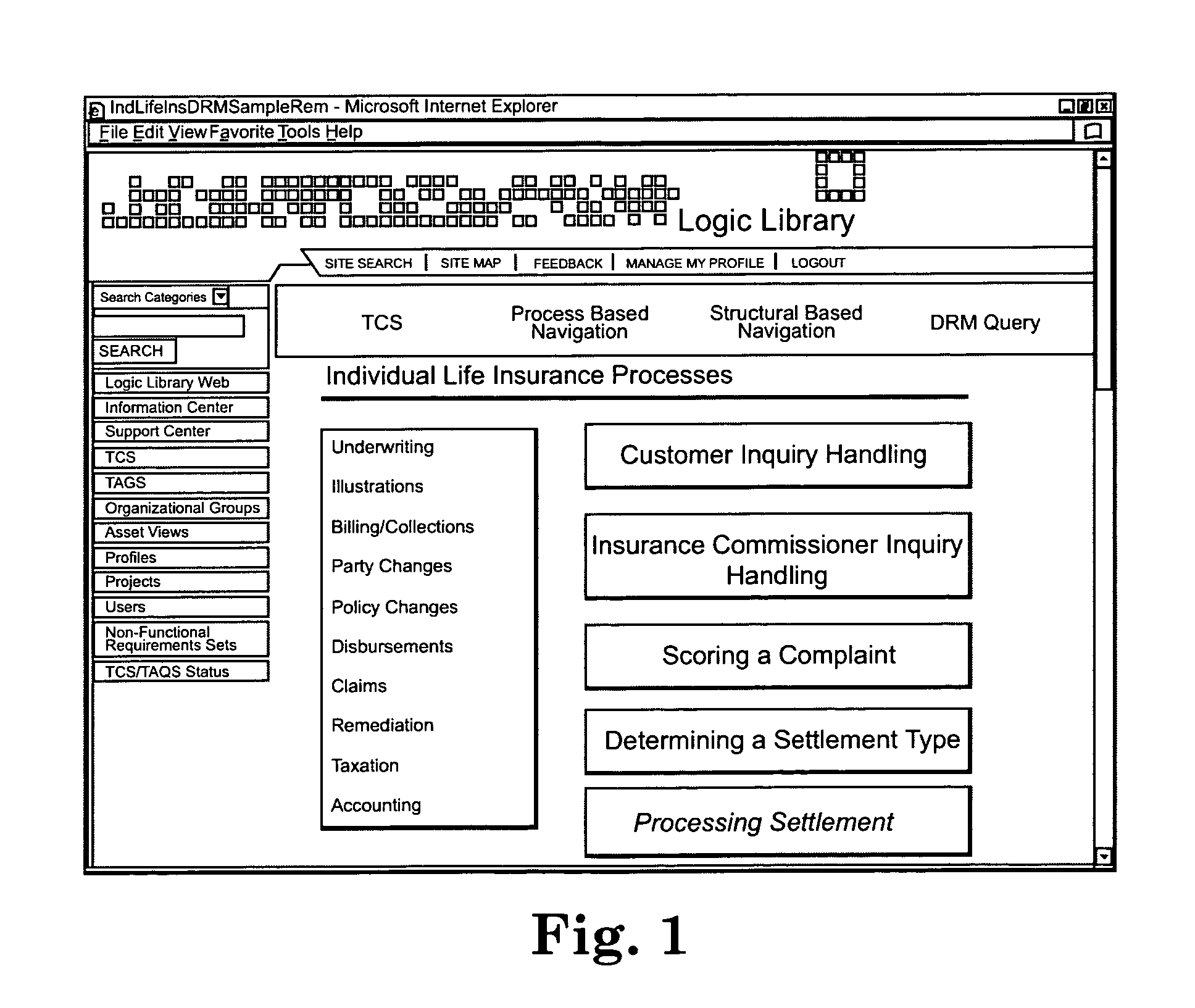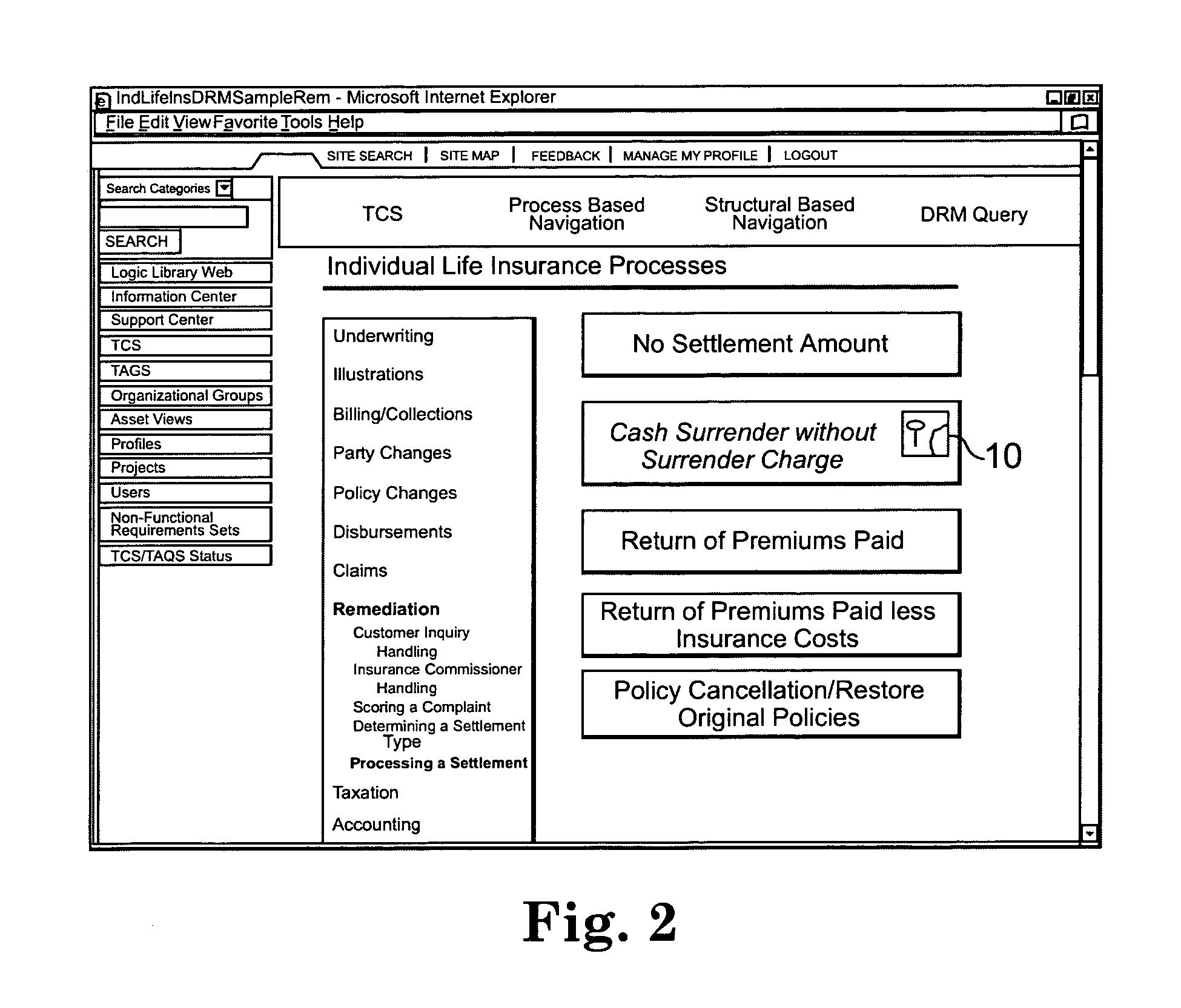[0005]The invention includes a targeted asset capture system that maps software resources to a domain model, and search and management tools for retrieving asset information and controlling asset acquisition. The domain model may include a process-centered organization and / or a structural organization of model tasks, functions, and data types. Capture includes mapping to the model functions and data types, and preferably also includes capturing other information about the asset and about the quality of mapping. The domain model may be used to build a search specification for searching for available assets that meet some or all of a set of functional (and / or nonfunctional) requirements. The search specification may also be published in part or in whole as a development specification.
[0006]In one aspect, the invention comprises an asset capture software utility. The utility includes a database for cataloguing software resource information, and means for mapping functions and data types to a predetermined domain model. The domain model may be a two-part model comprising a process model and a structural model, which may be linked to one another. There may be multiple process models for a single structural model. The utility may use synonyms to suggest mappings to the domain model. The mapping means may include means for adding user comments, such as comments on the character or quality of the mapping or on the usage or purpose of certain functions and data types.
[0007]In another aspect, the invention comprises a database of resource information, where the resource information includes functionality information mapped to a predetermined domain model. The database may include a search engine, for example an engine that can score resources according to how well they match functional or nonfunctional requirements. The search engine may include means for creating a persistent search specification that can be used by multiple users. Individual resources may be attached to the search specification for consideration. The search specification may be publishable, in whole or in part, as a requirements specification for software development. The search engine may notify one or more users of additions to the database that match a persistent search specification. Functionality information may be mapped over multiple domain models. The database may include means for viewing the domain model (e.g., graphically) in order to specify a search. The means may include means of navigating between process-side and structural-side of a domain model. The database may also include resource usage information, which may be linked to projects and may include information such as licensing data, resource acquisition tools, and usage reporting tools.
[0008]In a further aspect, the invention includes methods of classifying resources against a domain model, by mapping resource data types to model data types and resource functions to model functions, and storing the results in a searchable database. The domain model may include a process model and a structural model, which may be linked together. Multiple process models may also be linked to a single structural model. The method may include using synonyms to search model function and data type descriptions. Comments may be added to the database, for example on the quality of the mapping or on individual function or data type usage or purposes. The method may also include forwarding asset acquisition requests to an acquirer and storing acquisition information such as license keys. The method may also include generating usage reports or acquisition request reports.
[0009]In still another aspect, the invention includes methods of managing resources within an enterprise, by maintaining a searchable database of resource information including location information and functionality information, the functionality information being mapped to a domain model. The methods may include searching the database for resources that match functional or nonfunctional requirements, for example by creating a persistent search specification. A persistent search specification may be shared between users and / or published as a requirements document. Assets may be attached to the persistent search specification, and the method may include publishing the portions of the specification that are not matched by the attached assets. One or more users may also be notified when resources are added to the database that match the persistent search specification. The method may further include forwarding requests for resource acquisition to an acquirer, and storing acquisition information such as license keys. The method may also include generating reports on acquisition requests and / or resource usage.
[0010]In yet another aspect, the invention includes methods of mapping software resources to a domain reference model, including determining functions and data types to be mapped, sorting them into an order from most simple to most complex, and presenting them to a user in the determined order for mapping. As the user is presented with individual functions and data types, previously created mappings are used to refine further mapping suggestions. The determined order may include, for example, viewing all data types before viewing functions. The user may elect to map functions and data types in a different order.
 Login to View More
Login to View More  Login to View More
Login to View More 


